
To zoom press CTRL + (PC) or COMMAND + (MAC)

You may recognize the name Nelson Able; we’ve shared his story before – particularly the fancy dinner party he threw for his friends in 1863. Born around 1822 in Virginia, he was enslaved until his escape in 1850 via the Underground Railroad. After settling in Dundas in 1851, he established the Hamilton-Dundas Stage Coach in 1854, which he ran until shortly before his death in 1875. He was a well-respected and esteemed member of the Dundas community. This year we found a few more examples of just how true that was.
We finally located his obituary printed in the Dundas True Banner on May 13, 1875. This eloquently written account of his life highlights his time in Dundas and the deep connections he made within his community. Although we haven’t been able to locate his grave yet, we now know that he was laid to rest in Grove Cemetery by local undertaker Isaac Latshaw and his funeral was paid for by Lieutenant J.F. Smith thanks to additional information found in Latshaw’s Account book from 1848-1881. This obituary also helped point us in the right direction to make another discovery, but more on that next week!
Obituary Transcript:
Death of Nelson Able
On Sabbath afternoon, the mortal remains of Nelson Able were deposited in the Grove Cemetery in the presence of a very large number of our citizens. For months past, poor Nelson had been struggling for an existence under an attack of consumption, and almost up to the hour of his death, which took place on Friday evening at about eight o’clock, he had hopes that he would be able to conquer the disease and live. It was ordered otherwise, however, and at the age of about 48 this much respected and useful public servant was called upon to pass “that bourne from whence no traveller returns.” Nelson took up his residence in Dundas about 25 years ago, he having previously been a slave on a plantation near Raleigh, in Virginia. While a slave he had a kind master, and notwithstanding the strong feeling of respect and admiration which Nelson ever manifest for British institutions, he used to love to talk to those with whom he was intimate of the fine times he had when a boy “down south,” never having been engaged in any other occupation than that of coachman for his master, and in whose company he was in the habit of spending a good deal of time in making tours through the county. He thirsted for liberty, however, and assisted by kind friends he succeeded in escaping from slavery, and found a home on British Soil. – During his long residence in Dundas, 23 years of which time he constantly drove his stage twice a day to Hamilton, he earned for himself a reputation for strict honesty and trustworthiness which did not fail to secure for him the respect of his fellow citizens. He was possessed of strong impulses and prejudices, but no more painstaking or faithful public servant could be found than Nelson. By steady industry he had succeeded in accumulating considerable property, and prior to his death he presented Alex Moore, who had been very kind to him during his illness with $350, and to Mr. Geo. Ball, who had recently purchased his stage line, he gave $800, or the amount of the purchase money which he (Ball) had agreed to pay for the property, and to Mrs. Logan the whole of his furniture, &c. In addition to this he was possess of the dwelling house where he resided, and had, we believe, some money in Stinson’s Savings Bank, Hamilton. By the death of Nelson Able Dundas has lost an honest man and a much respected citizen.
We’ve made some really cool discoveries while researching for an upcoming project on Black History in Dundas, and we want to share them with you!
Dr. Anderson Ruffin Abbott was the first Canadian-born Black doctor. He served in the Union army as a civilian surgeon during the American Civil War and attended to President Abraham Lincoln in his last moments. Afterwards, he returned to Canada and married Mary Ann Casey. We knew that he and his family moved to Dundas in 1881, where he held many prominent positions, including President of the Mechanics Institute, Church Warden at St. James Anglican Church, and Assistant Editor of the Dundas True Banner. But we never knew for sure whether he practiced medicine while he was living here…until now!
While perusing through a prescription book from H.W. Ralph’s Dundas Drug Co. store, we came across several entries which had been prescribed by Dr. Anderson Ruffin Abbott, proving that he was indeed practicing while he was living in Dundas! This entry is especially interesting – the name above the prescription was the patient, in this case, Sam Lightfoot. Samuel Jackson Lightfoot was a Freedom Seeker born June 3rd, 1816, in Kentucky, USA. With the assistance of Josiah Henson, he escaped enslavement and eventually settled in West Flamborough. Samuel Lightfoot married Jane Brackstone, and their first child, John Samuel Lightfoot, was born in Dundas in 1838. Samuel and Jane had another son before she died in 1845. Samuel then married Ellen Ball and had another 10 children. He died in 1889 in New York, only a few years after this prescription was written.
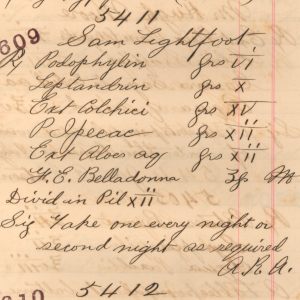
Although Dr. Anderson Ruffin Abbott and his family moved away from Dundas in 1889, he was an integral member of the community. He made a tremendous impact on the town and its inhabitants – especially his patients!
Join us at the Dundas Museum and Archives, as well as at the Dundas Driving Park, for the FREE Inside/Outside Festival!
Inside Outside Family Day Festival – February 20th
11:00 am – 4:00 pm
Inside: Dundas Museum & Archives – 139 Park Street West, Dundas
Outside: Dundas Driving Park – 71 Cross Street, Dundas
Visit both locations to be entered to win 1 of 3 fantastic prize packs!
Join us for the return of this classic community winter festival with free activities for all ages!
Inside (Dundas Museum & Archives) will feature crafts, a scavenger hunt, and the new Valley of the Dolls Feature Exhibition. Kids can also play in a life-size cardboard doll house!
Outside (Dundas Valley Sunrise Rotary Club) welcomes you to a skate at the Rotary Rink, paired with musical entertainment by Joan Ballantyne and Friends. There will be a Dundas Figure Skating Club demonstration at 11:30am and guests can test their skills at the Dundas Real McCoys/ Jr C Blues ‘Shoot the Puck’ event. Food will be available to purchase from local food trucks at the Driving Park and both venues will feature complimentary hot chocolate!
We hope to see you here, and there!
For the first day of Black History Month, we would like to introduce our Button Doll!
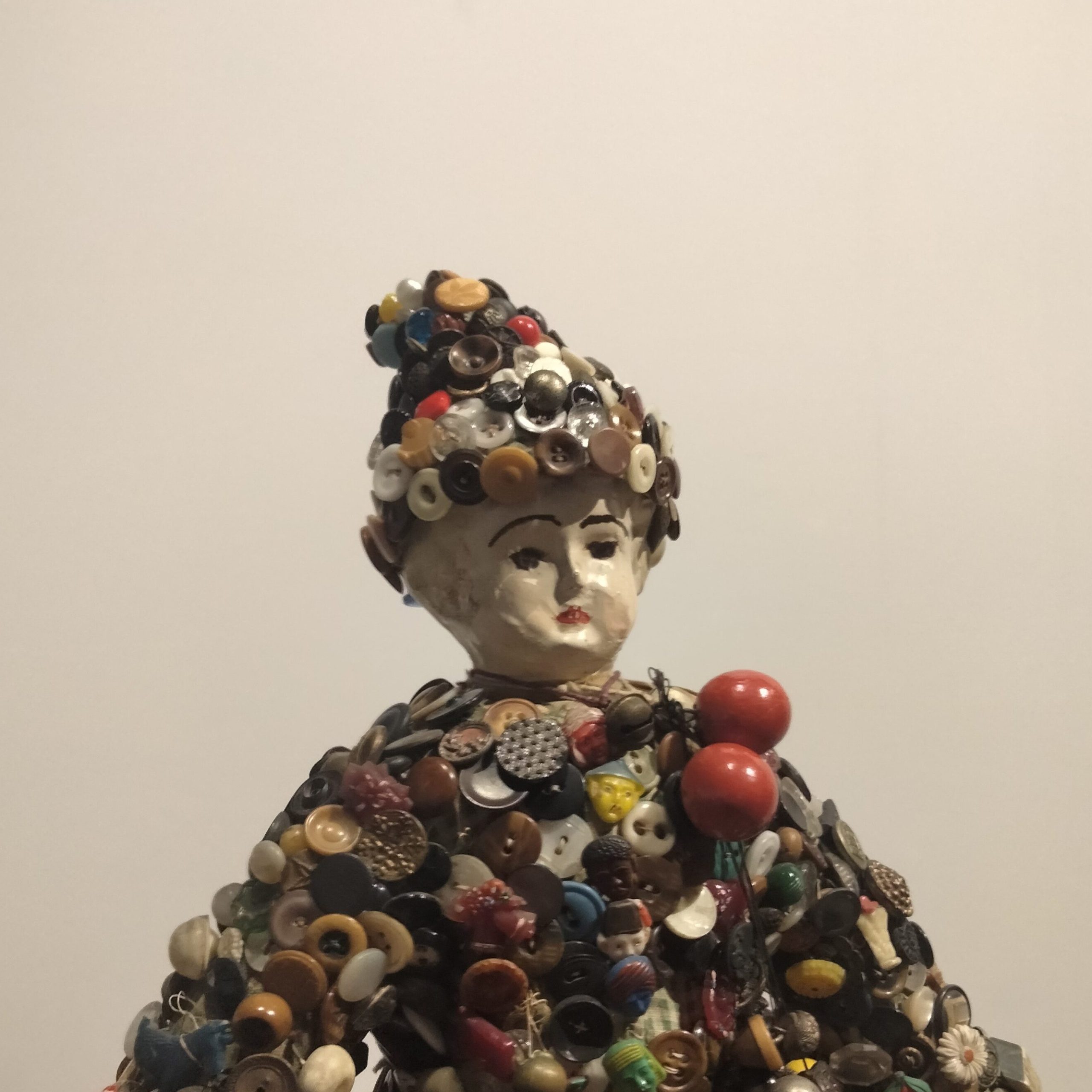
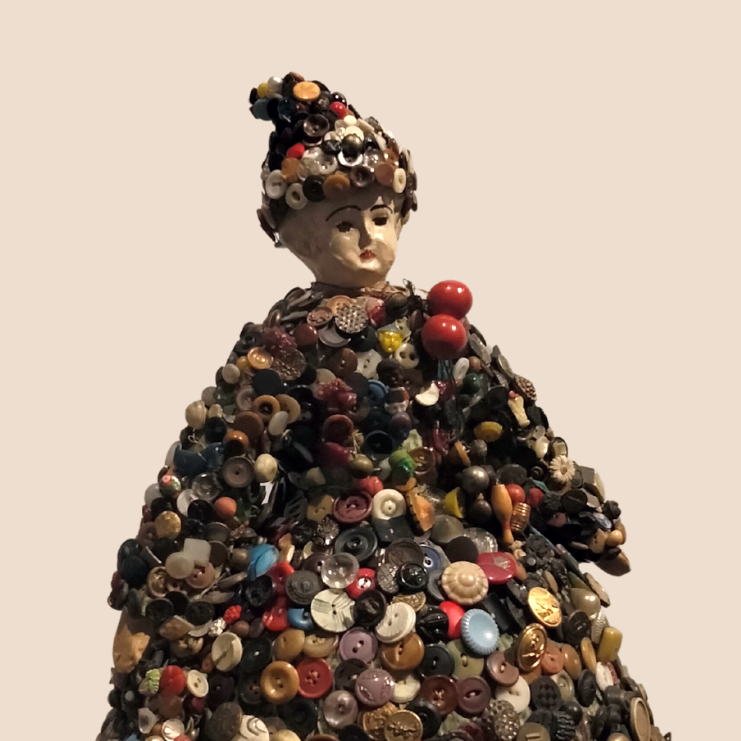
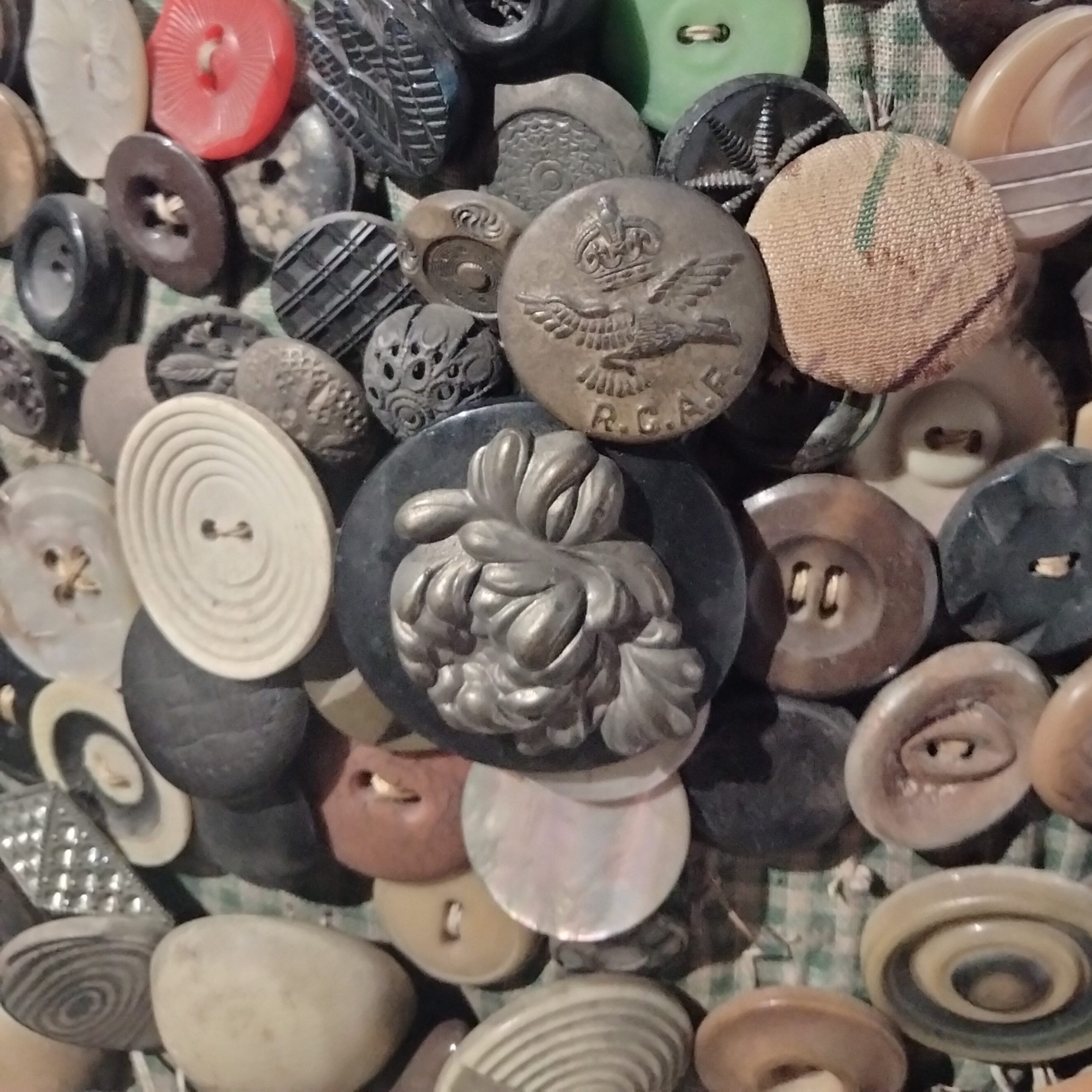
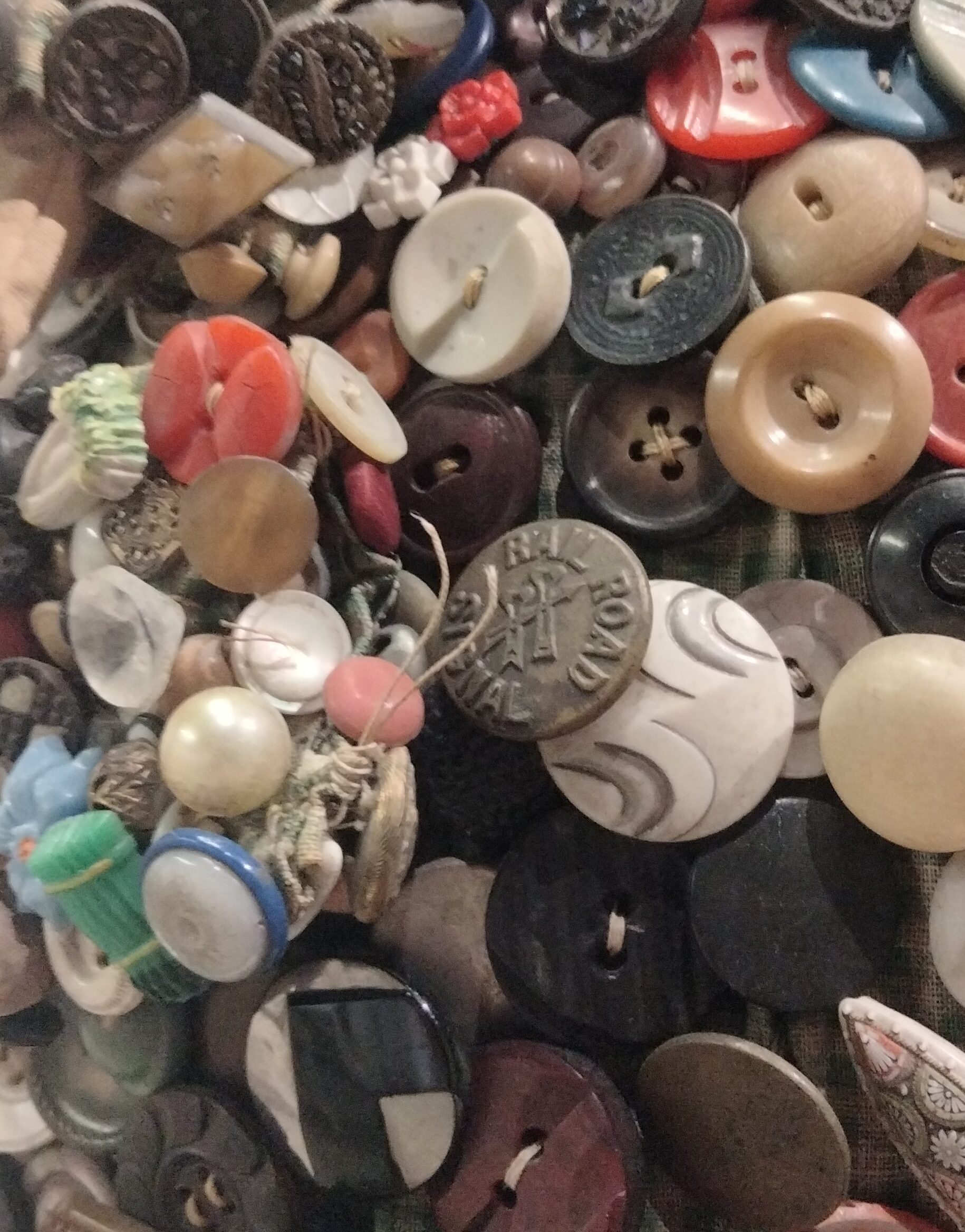
This amazing doll was made by Emma Green Lewis of Hamilton between 1929 and 1932. It’s covered, top to bottom, in a beautiful array of buttons Emma collected from family and friends, carefully sewn onto a green gingham dress.
Emma Lewis was the daughter of Mary-Anne Green, who came to Canada in 1858 after escaping enslavement in South Carolina. Emma was born in Collingwood and worked as a tailoress before moving to Hamilton and marrying Cornelius Lewis of Simcoe in 1900. Several of the doll’s buttons come from Cornelius’ time as a waiter on the Grand Trunk Railway.
They had 4 children, including Raymond “Rapid Ray” Lewis, the first Canadian-born Black Olympic medalist. Like his father, and many other Black men of the period, Ray worked as a railway porter. While training, he often ran along the train tracks during stopovers on the Canadian Prairies. The Canadian Pacific Railway buttons on the doll come from Ray.
Emma and Cornelius were both prominent members of Hamilton’s Black community and attended services at Stewart Memorial Church, Canada’s oldest black congregation. Many buttons perhaps come from Sunday dresses and suits.
Other buttons include one commemorating a Royal Visit, another from the Royal Canadian Flying Corps in which Black Hamiltonian Lincoln Alexander served, and one from the Hamilton Fire Department. Sadly, the stories behind many will never be known.
The Lewis family donated the doll in 1964, likely through the influence of Alden Brown, a family friend and a founding member of the Dundas Historical Society.
See this doll in person in our new Feature Exhibition, Valley of the Dolls, opening this Saturday, February 4th! 1pm – 4pm. You’re welcome to try to count the buttons for yourself!
With a Friends of the Museum Special Preview at 6pm, Thursday, February 2nd (that’s tomorrow!).